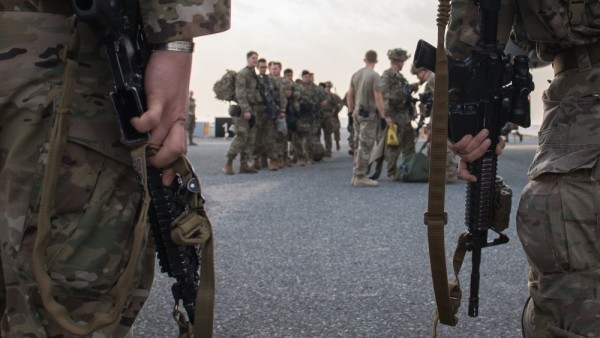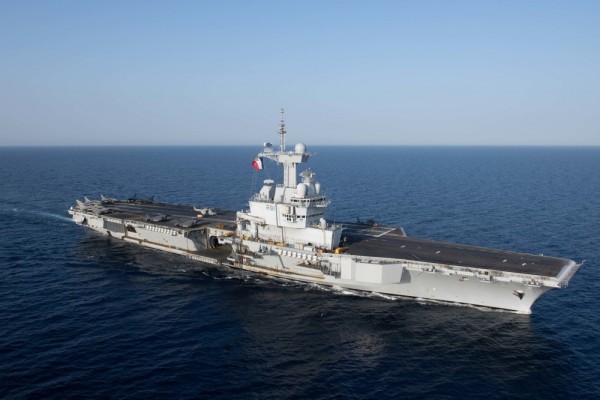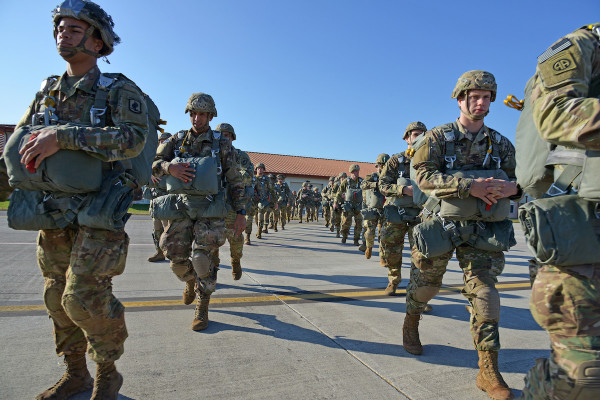The Navy could send a second aircraft carrier to the Middle East if President Donald Trump orders a surge of forces to the region, Chief of Naval Operations Adm. Mike Gilday said on Thursday.
Gordon Lubold and Nancy Youssef of the Wall Street Journal first reported the United States is considering sending up to 14,000 troops to the Middle East to deter Iran from attacking U.S. forces and regional allies. The surge forces could include several ships.
The aircraft carrier USS Harry S. Truman is already steaming to the Middle East. Task & Purpose asked Gilday on Thursday if the Navy has the capability to send another flattop to the 5th Fleet theater of operations of the president decides to increase the maximum pressure campaign against Iran.
“The short answer is absolutely yes,” Gilday said at the U.S. Naval Institute’s Defense Forum in Washington, D.C.
“We have a requirement that is dictated by the secretary of defense in terms of our readiness posture for our carrier strike groups and and our air wings and we meet that requirement,” Gilday added. “We also have the ability to surge if we have to. If there is a requirement to surge, we will be ready to surge.”
Pentagon spokeswoman Alyssa Farah has disputed the Wall Street Journal story. “The reporting is wrong,” She tweeted on Wednesday. “The U.S. is not considering sending 14,000 additional troops to the Middle East.
But the Defense Department’s denial appeared to unravel at Thursday’s Senate Armed Services Committee hearing, when Sen. Marsha Blackburn (R-Tenn.) pressed a top Pentagon official about whether the Defense Department was considering dispatching another 14,000 troops or a smaller force to the Middle East.
“Should I be completely shocked if I were to wake up one morning in the near future and hear on the news that we are deploying a significant number of troops back to the Mid-East?” asked Blackburn, whose constituents include soldiers with the 101st Airborne Division. “And if this were under consideration, where would you be pulling those troops and resources from in order to meet that obligation?”
Undersecretary of Defense for Policy John Rood began his answer by talking about the threat posed by the Iranian regime when Blackburn interrupted to ask, “So you are considering it?”
“Yes,” Rood replied, adding Defense Secretary Mark Esper has not made any decisions about deploying additional troops to the Middle East.
Rood also would not say how many troops could be dispatched to the region. He noted that roughly half of the service members sent to the Middle East since May have served aboard Navy ships, including aircraft carriers, cruisers and destroyers.
Sen. Joshua Hawley (R-Mo.) asked Rood if Farah had misspoken when she said the Pentagon is not considering sending another 14,000 troops to the Middle East.
“The secretary of defense has told me he intends to make changes to our force posture there,” Rood replied. “With respect to that statement by the spokesperson: We have not made a decision to deploy 14,000 troops.”
Noting that was not what the Wall Street Journal reported, Hawley demanded that the Pentagon – preferably Esper — clarify the matter later on Thursday.









